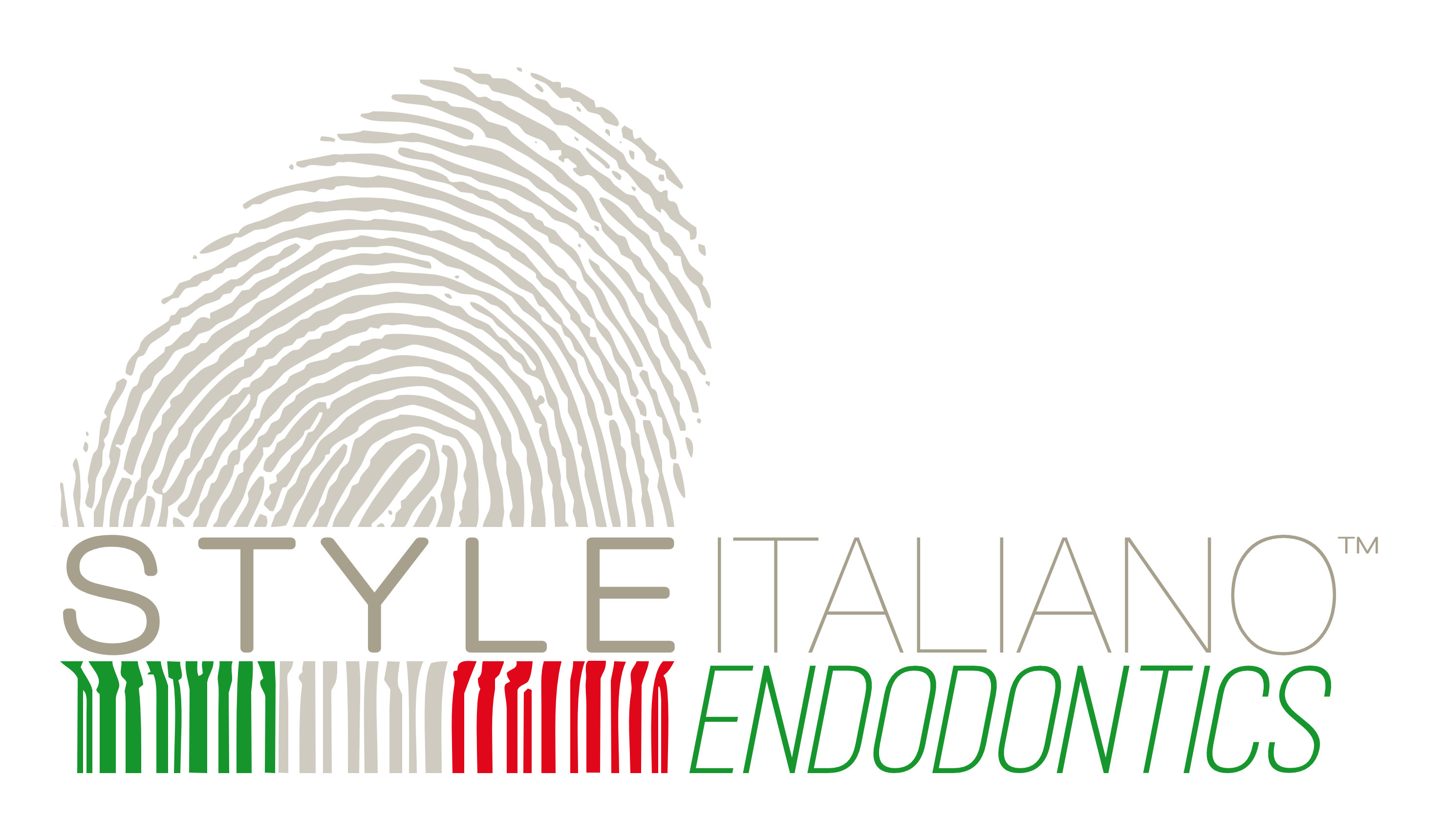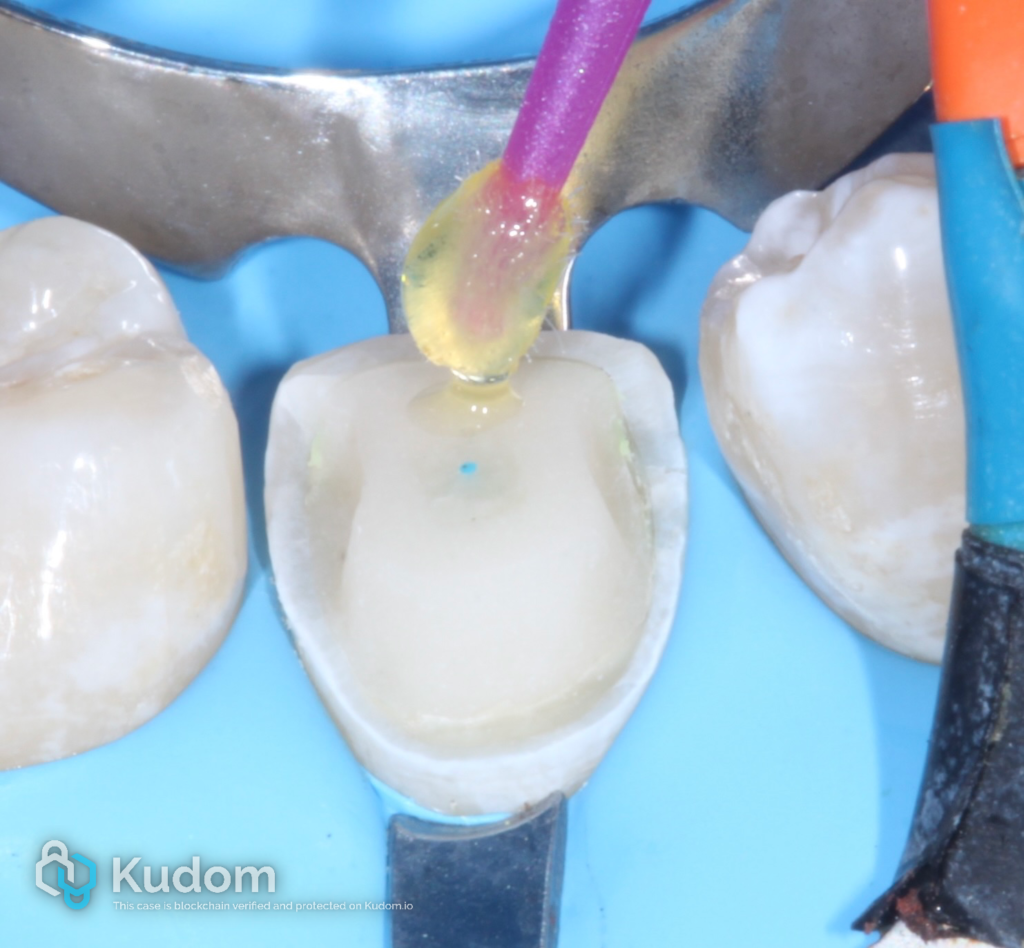
Endo restorative rehabilitation with fiber post of a lower premolar
29/09/2025
Fabio Gorni
Warning: Undefined variable $post in /var/www/vhosts/styleitaliano-endodontics.org/endodontics.styleitaliano.org/wp-content/plugins/oxygen/component-framework/components/classes/code-block.class.php(133) : eval()'d code on line 2
Warning: Attempt to read property "ID" on null in /var/www/vhosts/styleitaliano-endodontics.org/endodontics.styleitaliano.org/wp-content/plugins/oxygen/component-framework/components/classes/code-block.class.php(133) : eval()'d code on line 2
In post endodontic restorations with post, the choice of the post is extremely important because we need to select the biggest post that fits into the root canal without touching the walls. In some anatomies, where the shape of the canal is not round, this step can be more challenging.
Below an example.
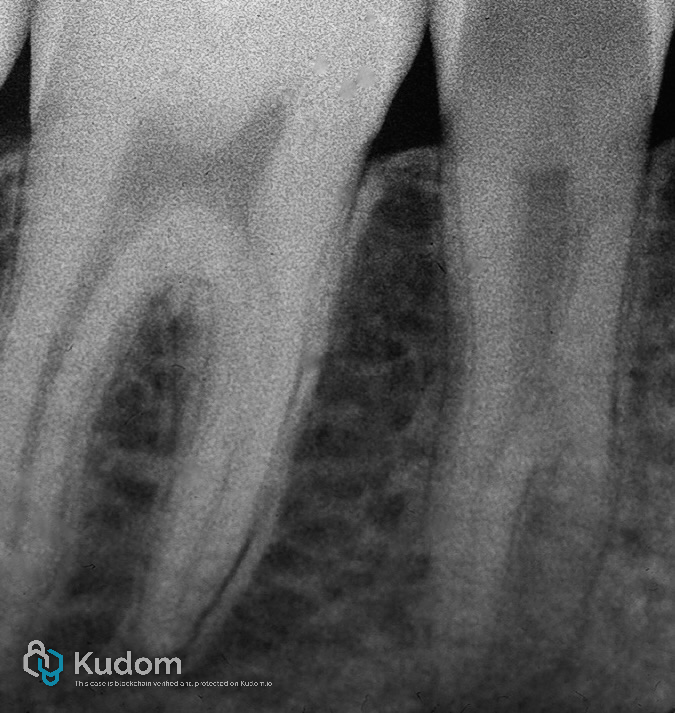
Fig. 1
Patient Presentation:
A 19-year-old male patient presented with a severely compromised tooth 45, characterized by an extensive carious lesion leading to the complete loss of the clinical crown. Despite the advanced structural damage, the tooth was asymptomatic upon clinical and radiographic examination.
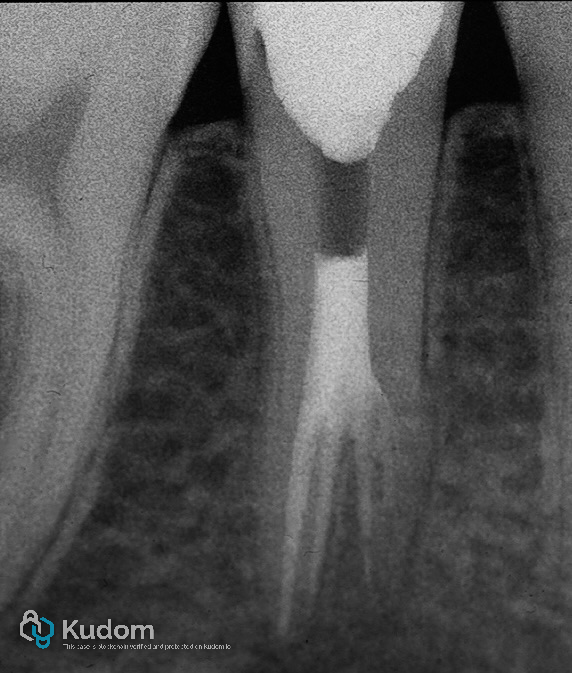
Fig. 2
Diagnosis and Treatment Plan:
Given the extent of coronal destruction, non-surgical root canal therapy was indicated, followed by a post-endodontic core build-up and definitive restoration. The objective was to preserve the remaining tooth structure and restore full function and aesthetics.
Endodontic Treatment:
Root canal therapy was initiated under rubber dam isolation. Anatomical exploration revealed a complex canal system with three distinct canals, including one with a C-shaped morphology. Thorough cleaning, shaping, and obturation were performed using standard endodontic protocols tailored to the intricate anatomy.
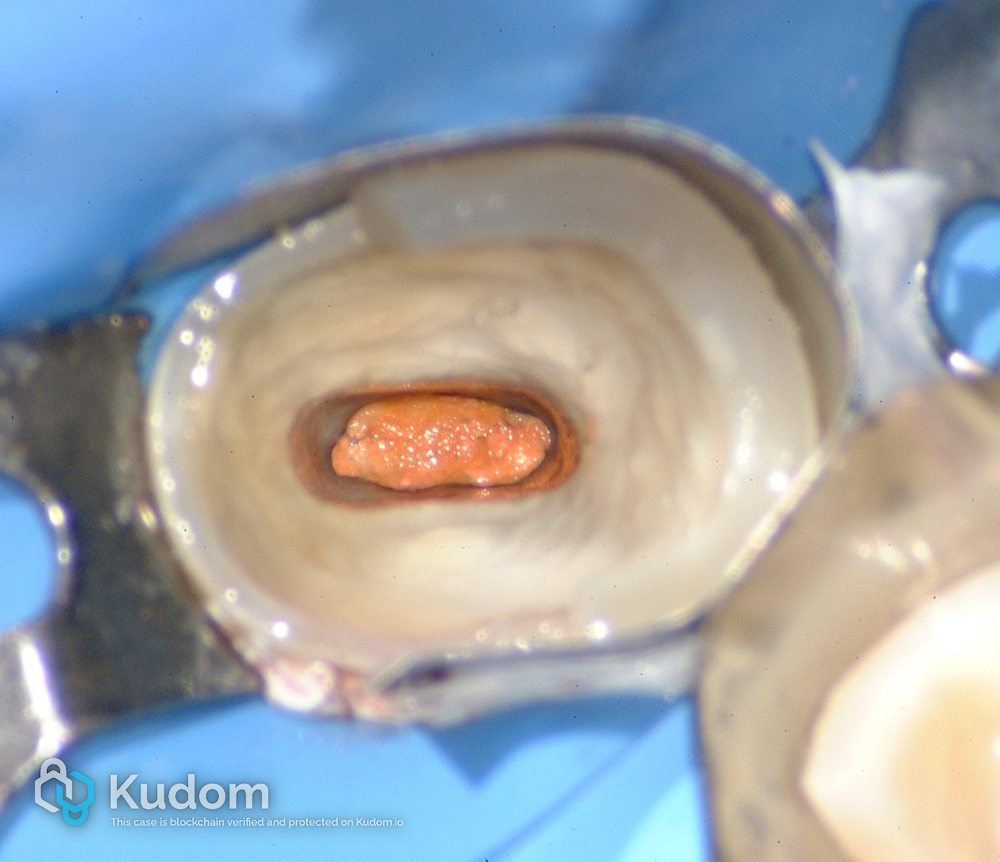
Fig. 3
Following endodontic treatment, the post space was prepared to receive a fiber post
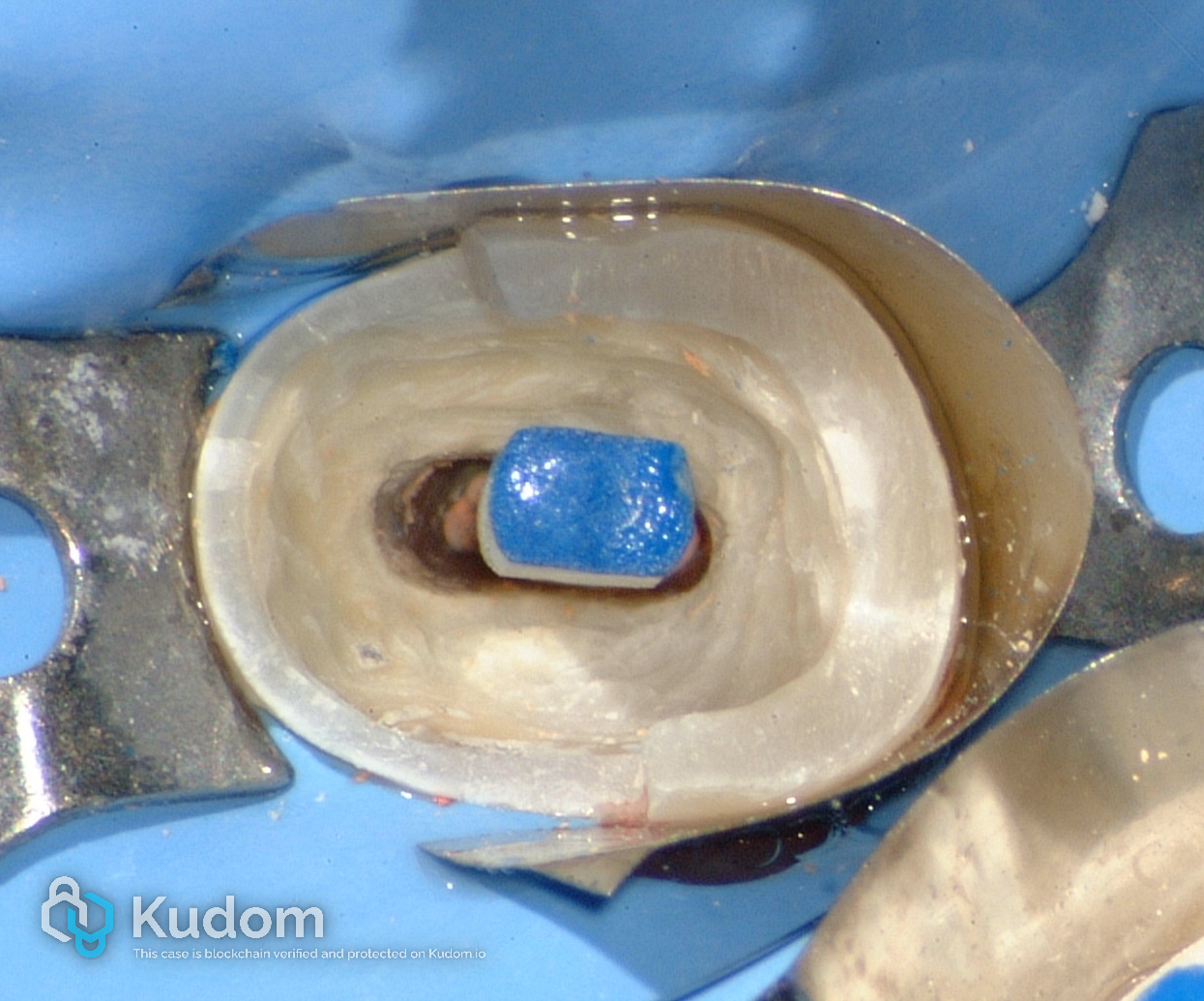
Fig. 4
An HI-REM POST (Overfibers), characterized by its elliptical shape, was selected to enhance adaptation to the canal’s original middle-third morphology.
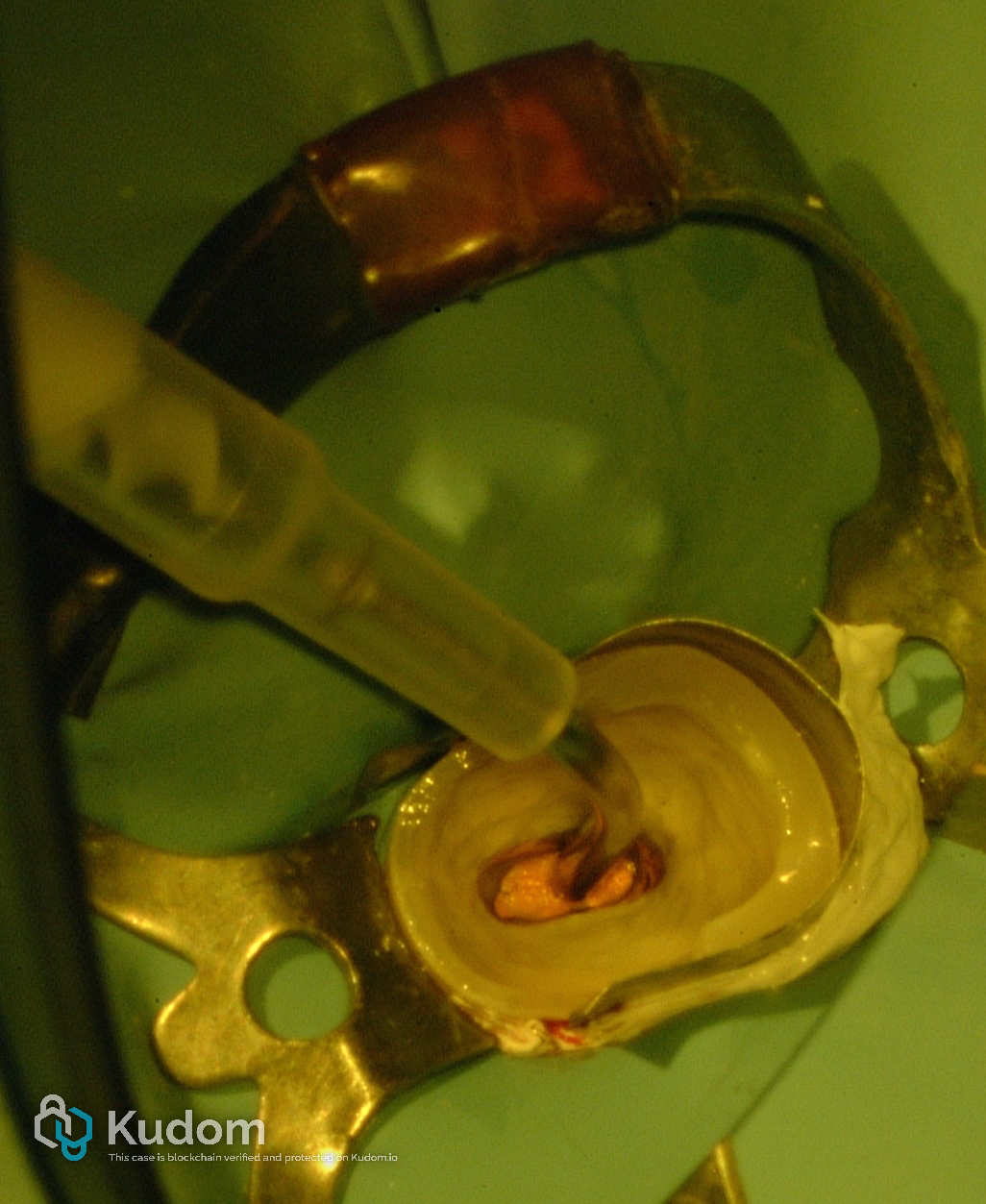
Fig. 5
After adequate post space conditioning, the post was cemented using OverCem SA (Overfibers), a dual-curing, self-adhesive resin cement.
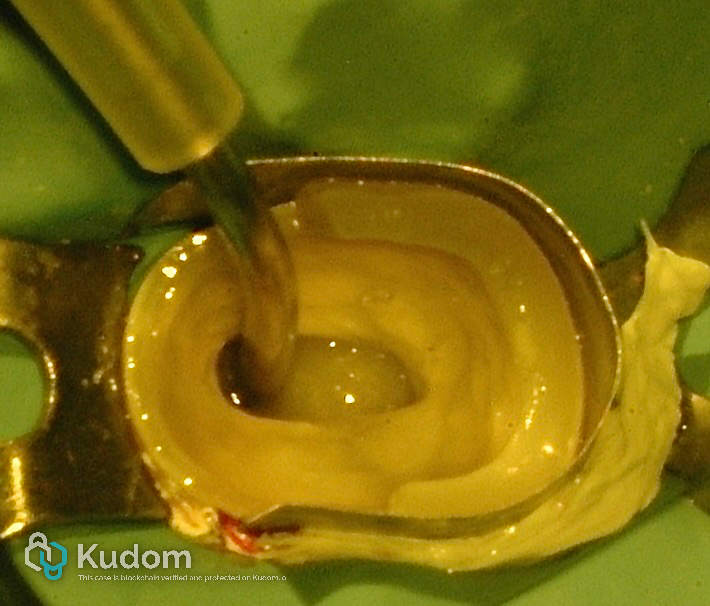
Fig. 6
Luting procedure
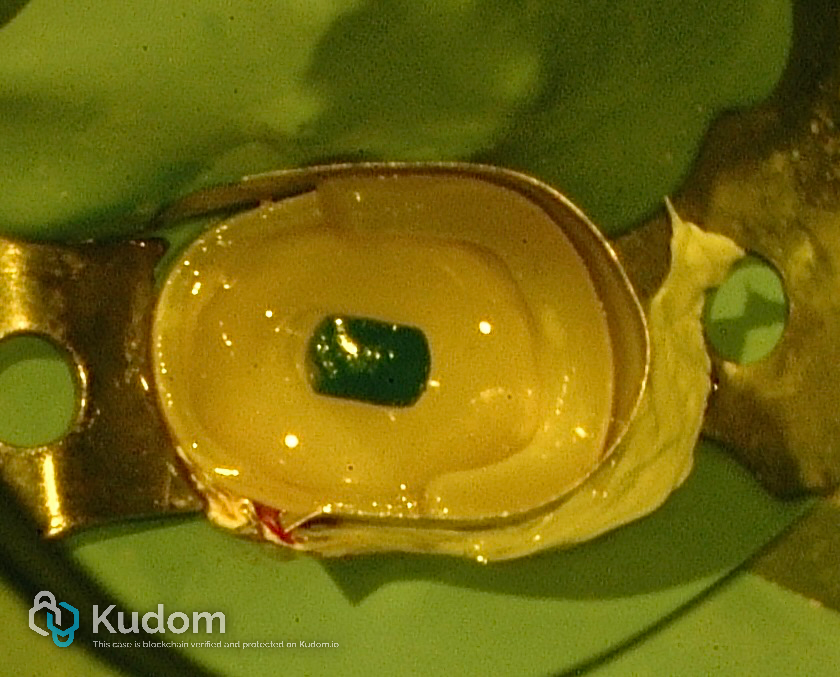
Fig. 7
FIber post positioned
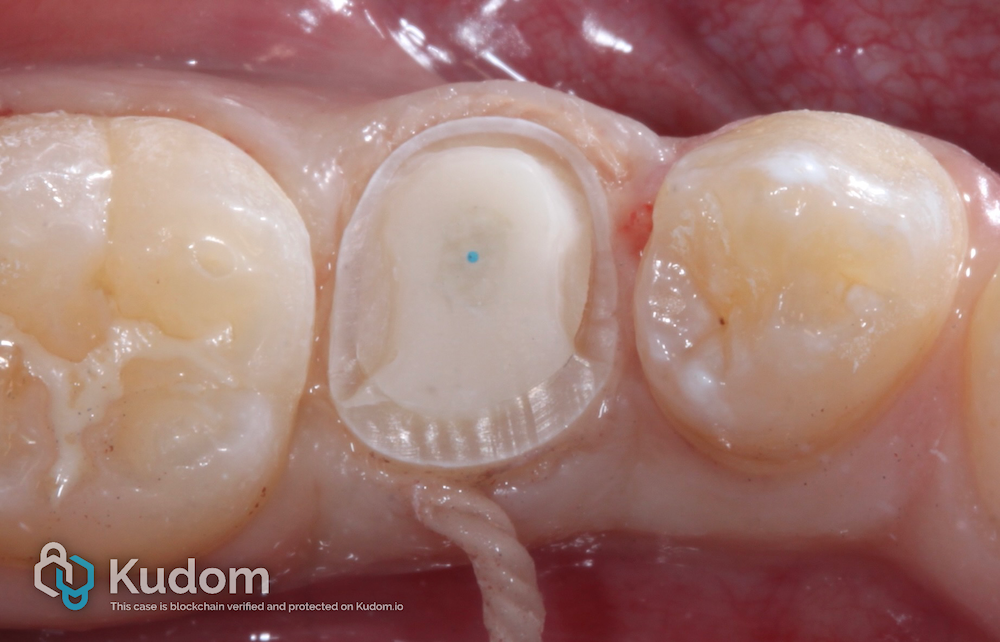
Fig. 8
After the core build up, the tooth was prepared for indirect restoration
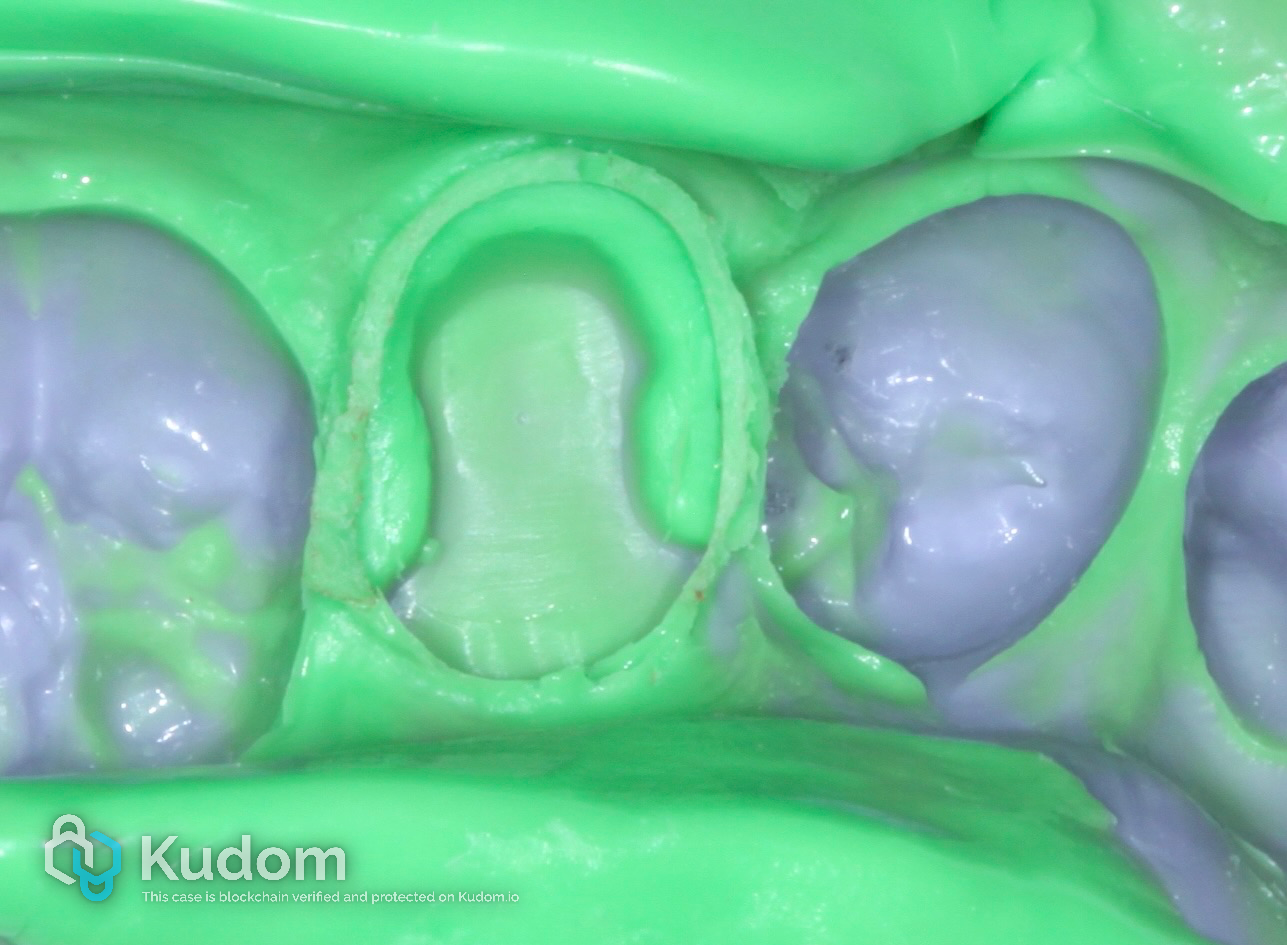
Fig. 9
Impression
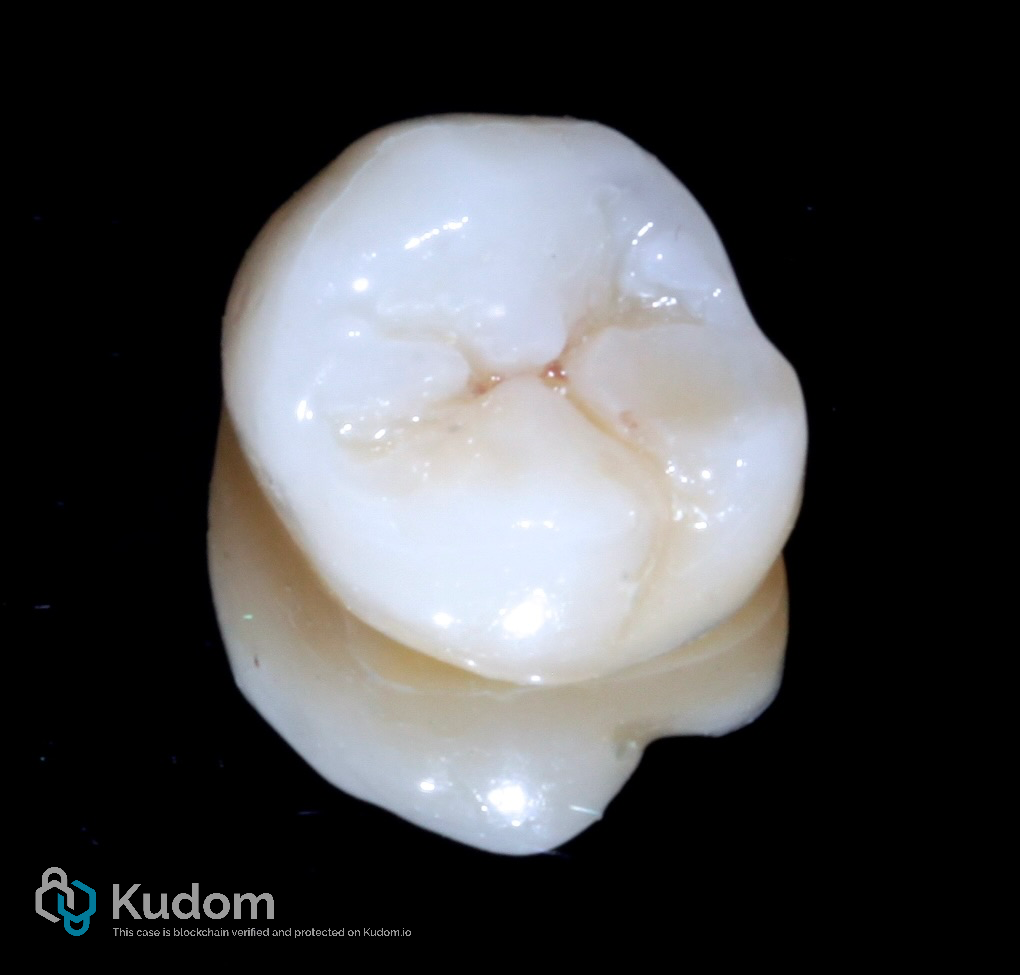
Fig. 10
The indirect restoration before luting
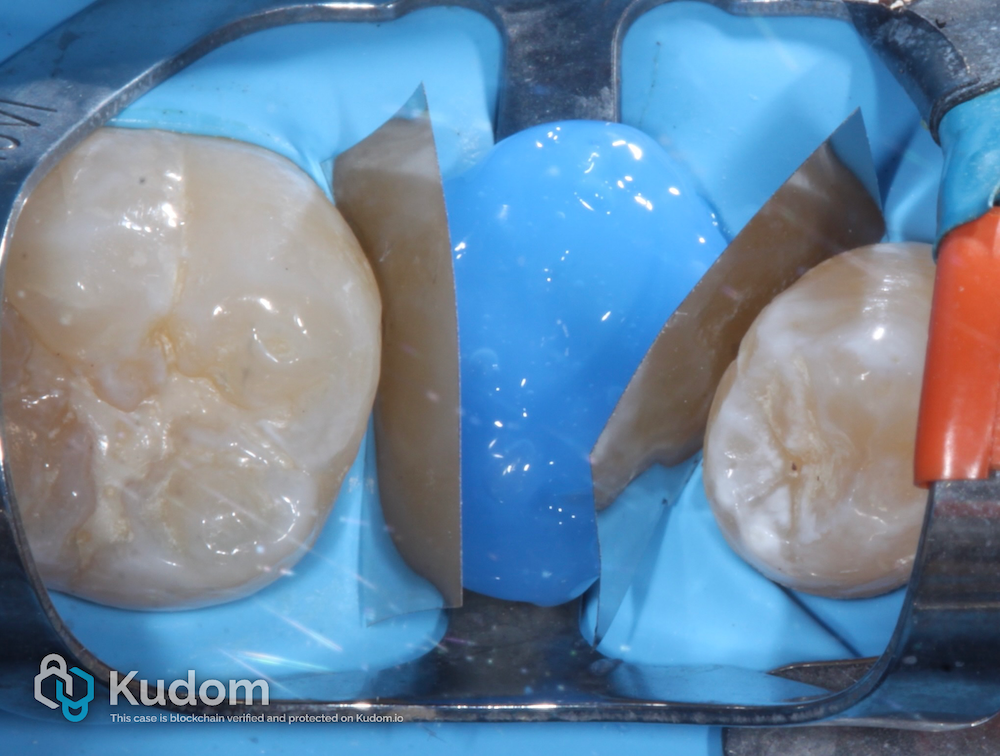
Fig. 11
Etching
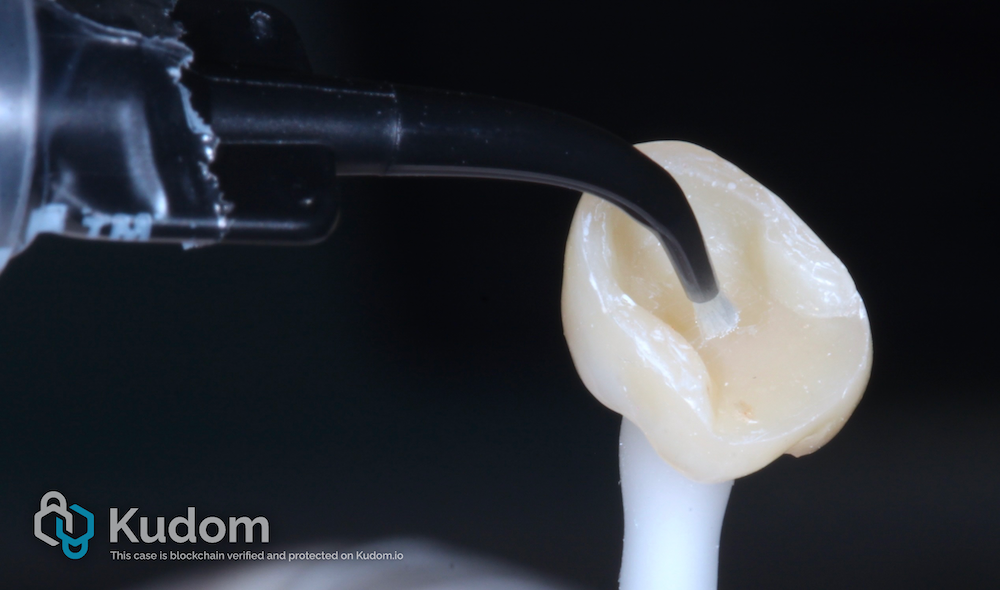
Fig. 12
Silane
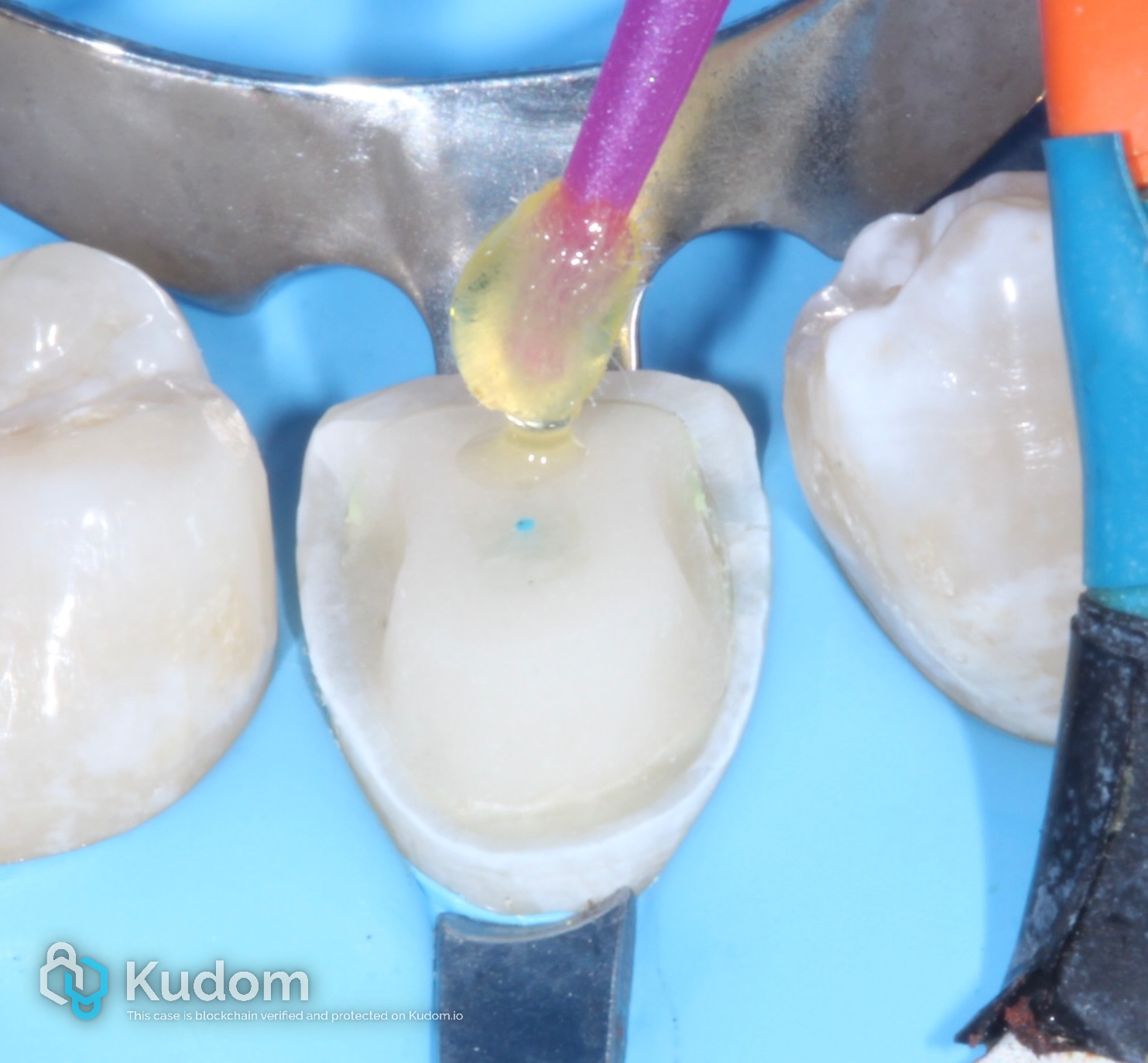
Fig. 13
Bonding
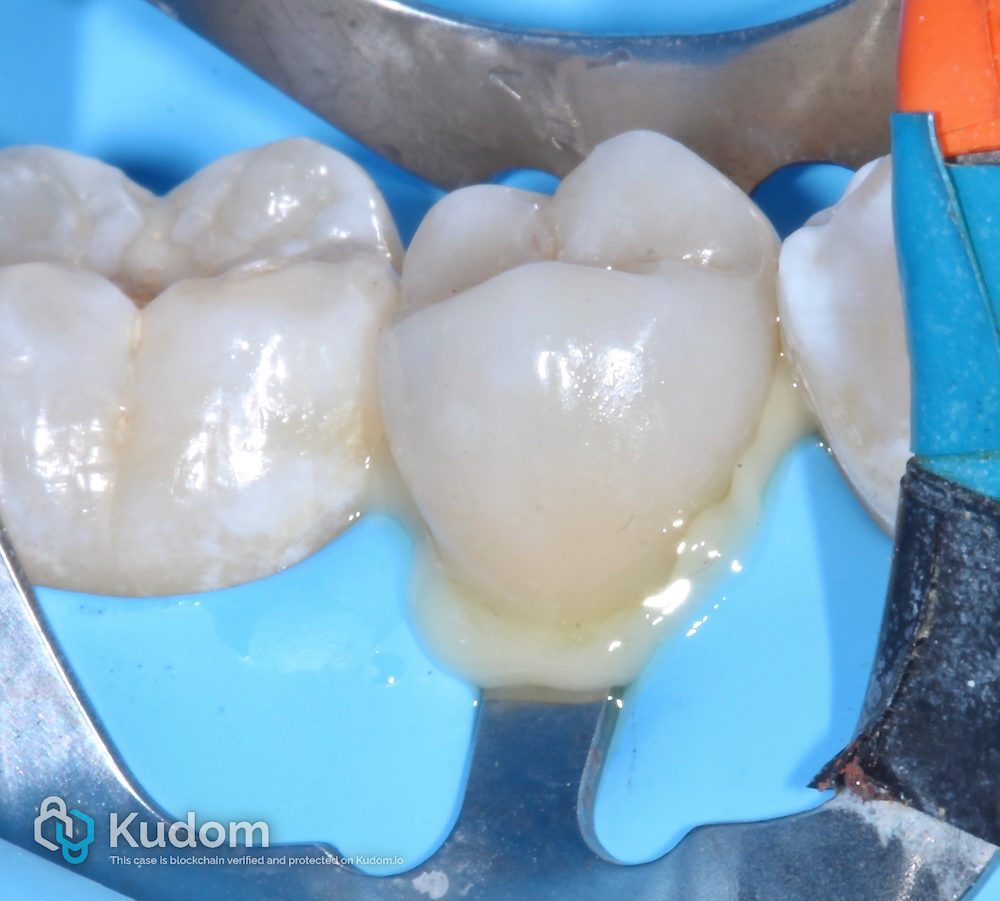
Fig. 14
Overlay in place
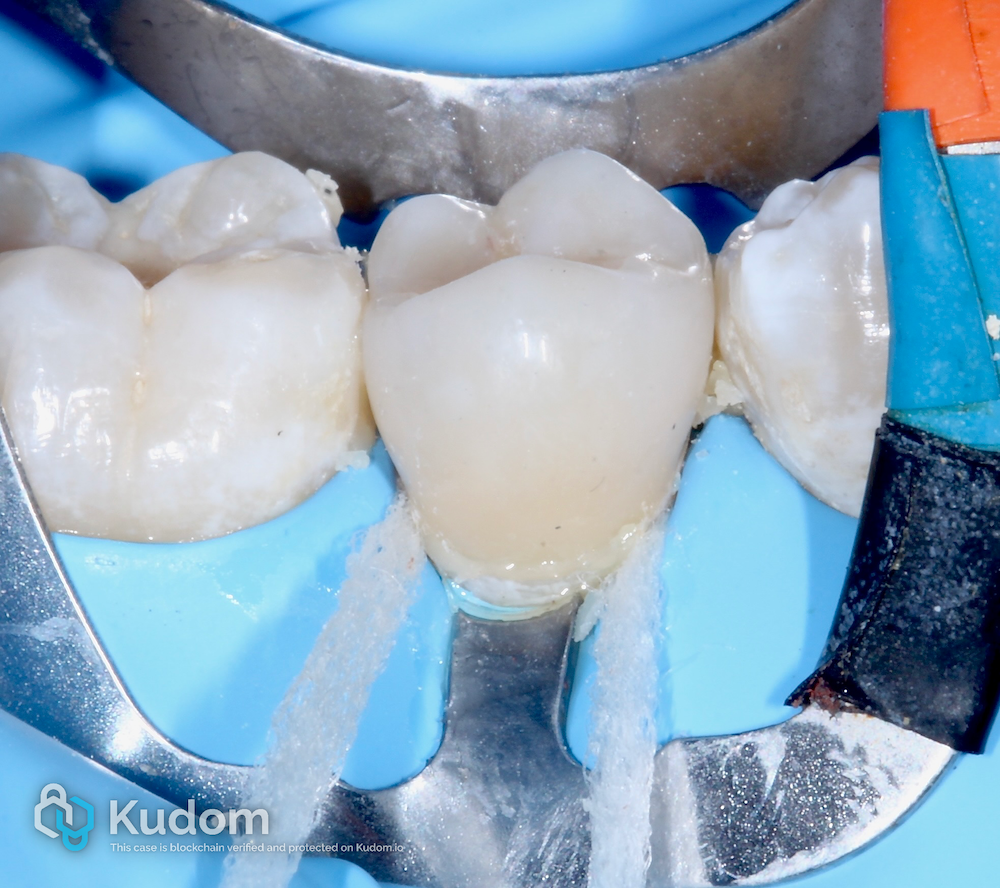
Fig. 15
Excess of luting composite removal
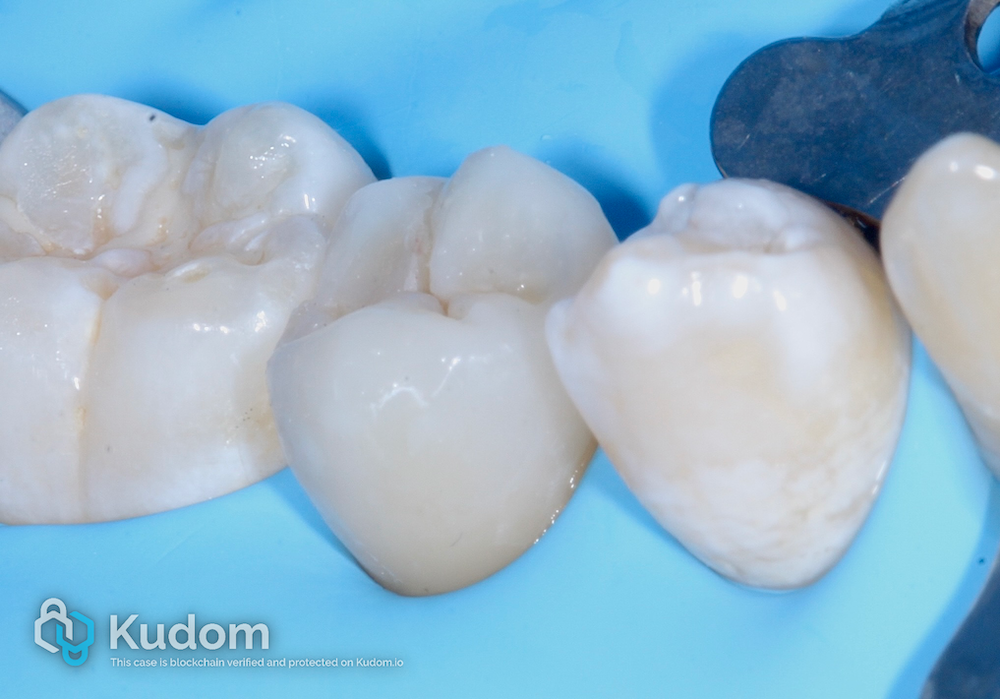
Fig. 16
After light curing
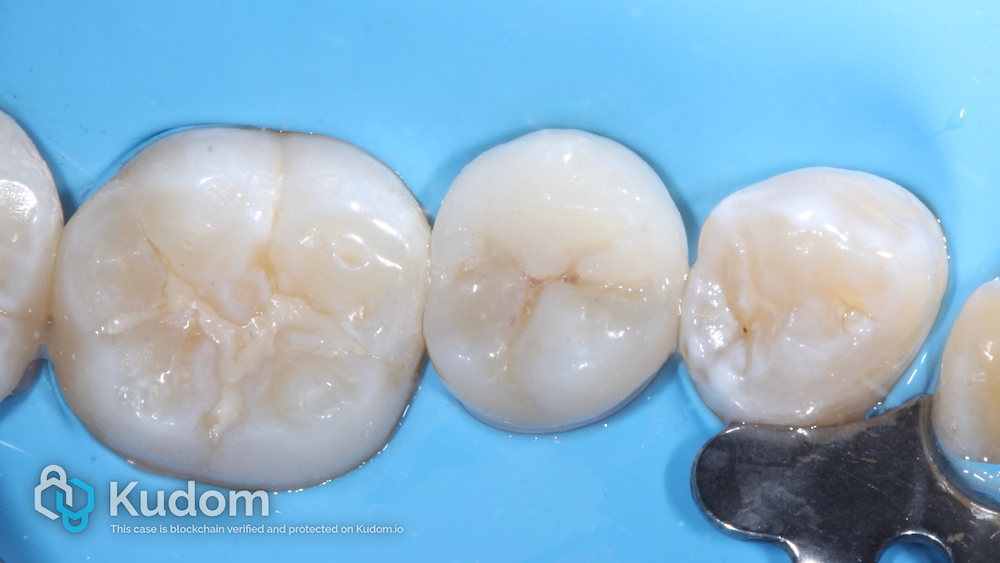
Fig. 17
Occlusal view
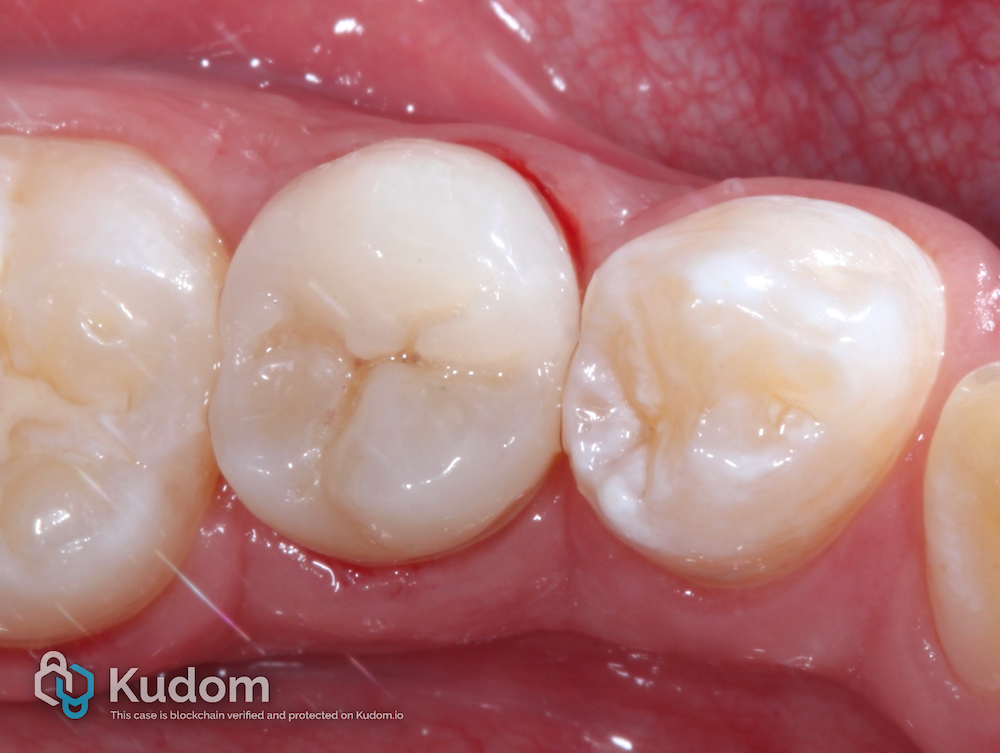
Fig. 18
After rubber dam removal
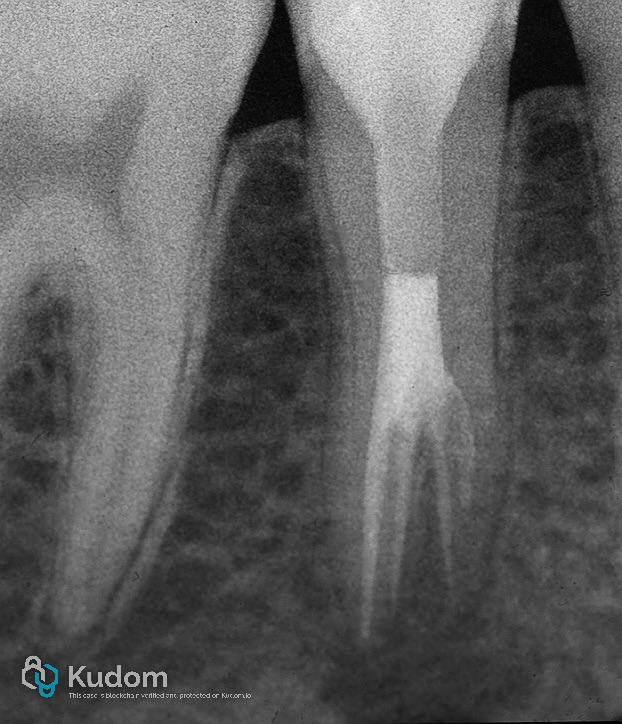
Fig. 19
Post operative
Conclusions
This case illustrates the successful management of a structurally compromised yet asymptomatic mandibular premolar through endodontic therapy, fiber post reinforcement, and adhesive restoration. The use of anatomically adapted fiber posts and modern adhesive techniques allowed for a predictable and conservative rehabilitation of the tooth.
